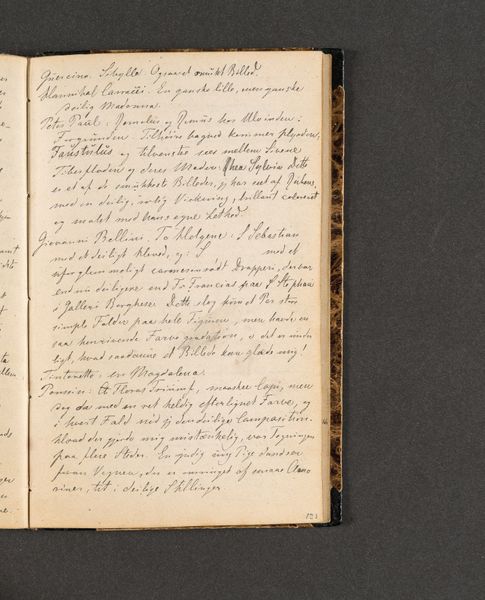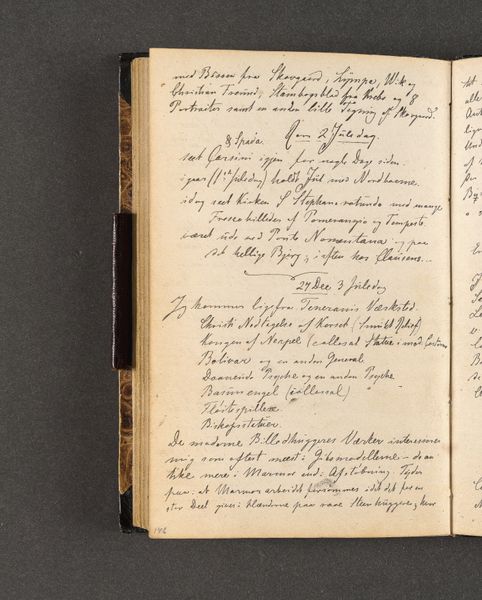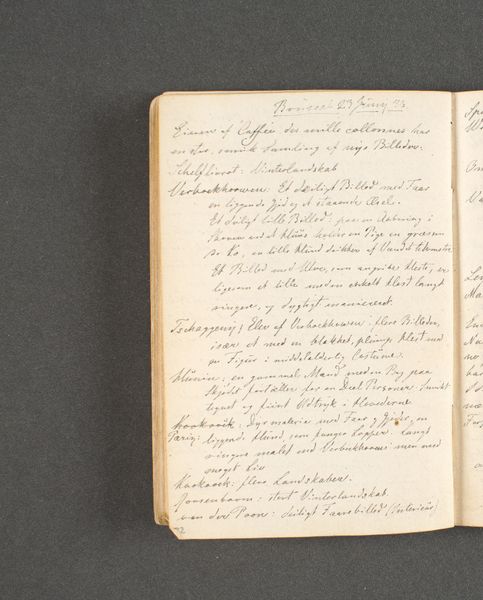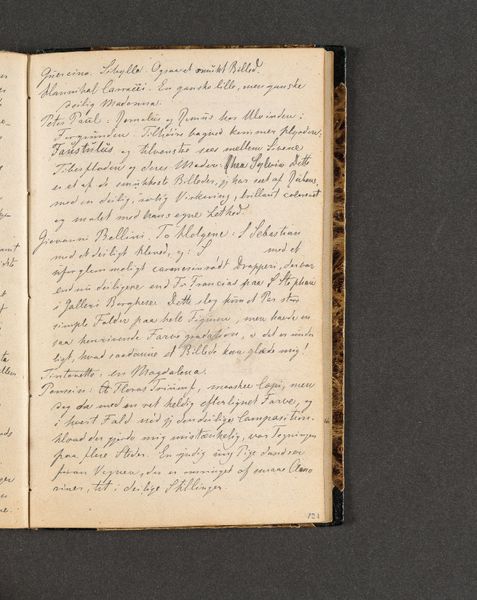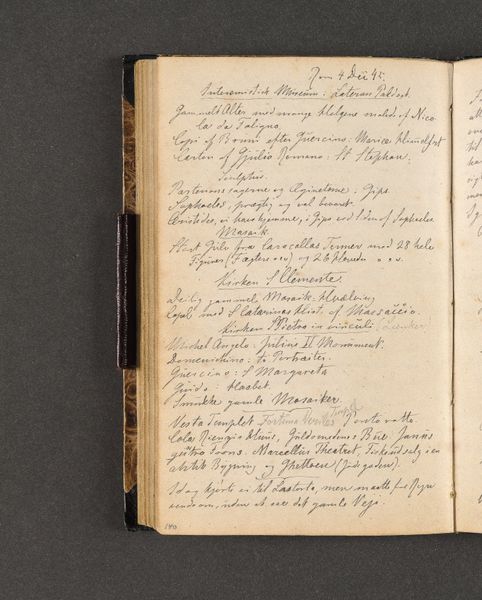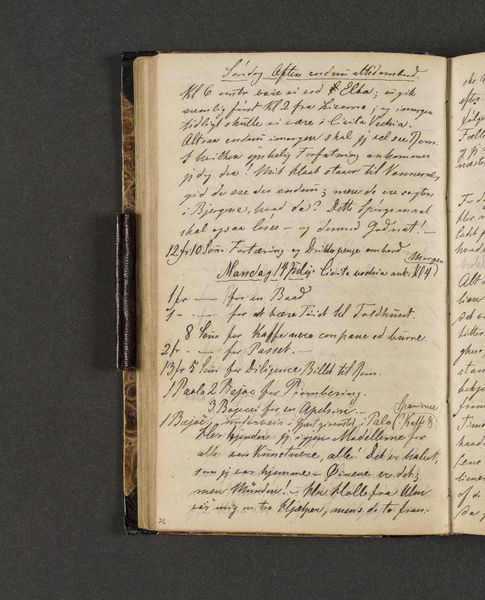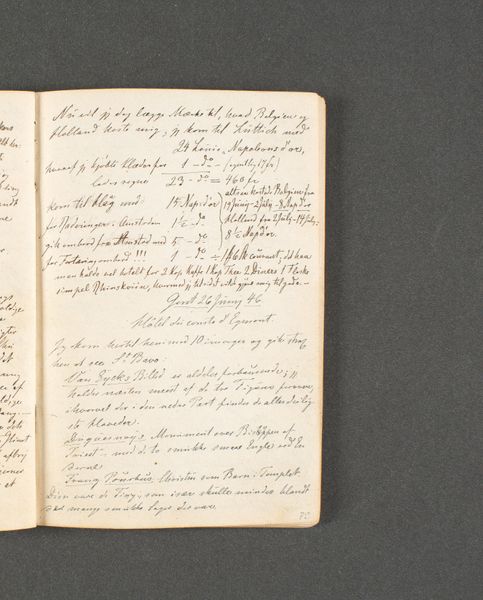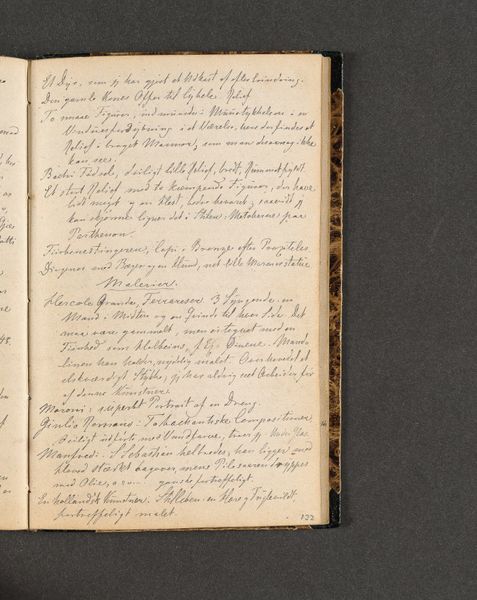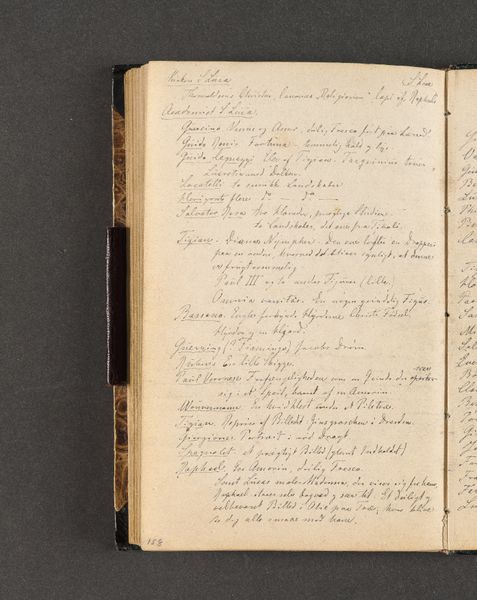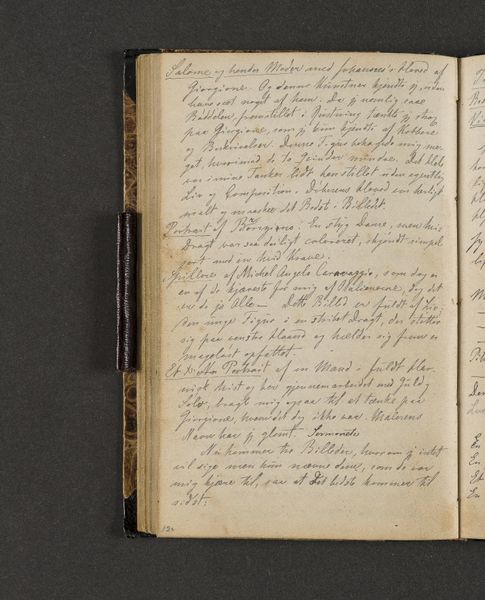
drawing, paper
#
drawing
#
aged paper
#
book binding
#
paper non-digital material
#
paperlike
#
sketch book
#
personal journal design
#
paper
#
personal sketchbook
#
journal
#
sketchbook art
#
design on paper
Dimensions: 161 mm (height) x 103 mm (width) x 11 mm (depth) (monteringsmaal)
Editor: We're looking at Johan Thomas Lundbye’s "Rejsedagbog" from 1846, a travel journal made with drawings and paper. It's basically an open sketchbook page with handwritten notes. The script seems so personal; what do you see when you look at this, something so intimate? Curator: I see a fascinating palimpsest of experience. Each word, each observation meticulously penned, is a symbol not only of a specific place but of Lundbye's evolving understanding of it. Consider the act of journaling itself: it's a process of translation, transforming the sensory world into linguistic and visual codes. Editor: So, you're saying that the words themselves become a sort of imagery? Curator: Precisely. Lundbye isn't merely recording information; he's curating a narrative, selecting and arranging details to construct a particular image of the journey, but how does it connect to memory, can you tell me what locations jump out to you here? Editor: I see a few, "Albano," "Arizia," it sounds like a trip through Italy...so, this sketchbook becomes almost a vessel for preserving his own lived experience and reflections, making it an intimate self-portrait, that is made complete through those recollections, I think. Curator: Precisely. And notice how the visual weight of the text varies; denser passages might indicate periods of intense observation or emotional resonance. This isn't just a travelogue; it's a cartography of the self. It reveals a layering of cultural memory over landscape, yes, in the way that Lundbye perceives them. Editor: I hadn't considered how the very act of writing could be so symbolic, and also so emotional and subjective, instead of simply informative. Thank you for making me consider that! Curator: And thank you. Recognizing those subjective layers makes viewing something like this more enjoyable.
Comments
No comments
Be the first to comment and join the conversation on the ultimate creative platform.

